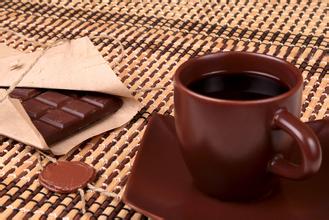Introduction to the Grinding Calibration of Katim Coffee Bean characteristics and Flavor description
Introduction to the Grinding Calibration of Katim Coffee Bean characteristics and Flavor description
So we hand-picked on the spot, and when finally picked out, there were still 9 kilograms of qualified ones left-- and by this time most of the morning had passed, of course, if it is used to make instant coffee or general commercial beans, high-yield catimor is a good choice, but if we want to find Yunnan specialty coffee, then the old variety of iron pickup has become the first choice because of its congenital excellent genes. Therefore, this trip to Yunnan also followed the trail of the old varieties. But the reality is really cruel. Before going, Brother Zou told me that there was an old variety in his relative's house, but what he saw excitedly was a crazy growing coffee forest, which belonged to his aunt because his aunt was not old enough to plant and renovate-- so these old varieties survived, but the aunt was unable to manage it alone, so he left the tree to grow naturally and pick some fruit when it matured to trace its roots. Typica, which originated from Ethiopia, is the earliest original species of coffee. Bourbon is a variety of typica. Both of them have rich aroma and excellent taste performance, and they also belong to very high quality varieties in Arabica. It is said that the coffee tree species that was first introduced into Zhukula in Yunnan is typica. When coffee was planted on a large scale in Baoshan area in the 1950s, it was also typica and bourbon. But the problem is that although these two varieties have excellent taste, they are not resistant to diseases and insect pests, are prone to leaf rust, and the yield per mu is relatively low, so corresponding to this, there are "new varieties".
Katim, it's hard to say. I have limited ability to express myself. To introduce it in simple words is messy but has a heavy taste. The above all depends on the personal feeling of drinking coffee, I do not sell coffee beans or open a coffee shop, but simply like to drink and think about it by myself, hehe, it does not represent any authority, it is all my own feelings as for quality. I personally suggest that you can try it. Generally speaking, except Tiebika is a little more expensive, Katim can be said to be the price of cabbage. Tiebika medium roast taste individual coffee and then believe that you have your own comments, if you like the blue mountain flavor, I think I should like Yunnan Tibika. The taste is lighter and the aftertaste is long and fruity. But the first sip may disappoint you because there is no strong taste of coffee.
The output of Tiebika in Yunnan coffee is the lowest and the most expensive, and it also belongs to the best of Arabica species in the world, of which the Blue Mountains of Jamaica and Kona of Hawaii can be said to be Tibica. Due to changes in origin and some cultivation, Yunnan Tiebika is softer and sour is not as sour as Blue Mountain. But overall, Tibica tastes light (it should be very light), but it has a long aftertaste.
Baibang is second only to Tibica, which has a higher yield and a stronger flavor, and is not easy to buy on the market.
Katim is a variety introduced later, with a relatively stable output and strong resistance to diseases and insect pests. It is planted in a large area in Yunnan, and now it is easy to buy Katim beans on the market. Katim aa beans are also exported beans, which is not bad on the whole. Not to mention in China, even in the whole of Asia, Yunnan's beans are very excellent. As for cat shit, Manning and so on, it cannot be compared with Tibica in terms of coffee beans alone. These are the basic varieties in Yunnan. Generally speaking, they all belong to Tibica and the later varieties under Arabica, which is different from Robusta in Hainan.

Important Notice :
前街咖啡 FrontStreet Coffee has moved to new addredd:
FrontStreet Coffee Address: 315,Donghua East Road,GuangZhou
Tel:020 38364473
- Prev

Yunnan Lanshan Coffee Flavor description Grinding scale production area Variety characteristics taste introduction
Yunnan Lanshan Coffee Flavor description Grinding scale production area Variety characteristics most of the Blue Mountain Mountains are more than 1800 meters above sea level, of which the highest peak is 2256 meters above sea level. it is also the highest peak in the Caribbean and is a famous tourist resort. The unique flavor of Blue Mountain Coffee is related to its unique geographical location and climatic conditions. Blue Mountain is located between 25 degrees north latitude and 25 degrees south latitude.
- Next

The price of G7 coffee, a historical brand growing coffee beans in Vietnam.
Nhan, a historic coffee brand that grows coffee beans in Vietnam, graduated in 1967 and then returned to Vietnam to start working at Nghe's PhuQuy Rainforest Agricultural Research Station (PhuQuayTropicalCropResearchStation). The Tropical Rainforest Agricultural Research Station is a research institution under the Department of Agriculture, and they then worked with the Vietnamese government to figure out how to rebuild the war-hit Vietnam.
Related
- Detailed explanation of Jadeite planting Land in Panamanian Jadeite Manor introduction to the grading system of Jadeite competitive bidding, Red bid, Green bid and Rose Summer
- Story of Coffee planting in Brenka region of Costa Rica Stonehenge Manor anaerobic heavy honey treatment of flavor mouth
- What's on the barrel of Blue Mountain Coffee beans?
- Can American coffee also pull flowers? How to use hot American style to pull out a good-looking pattern?
- Can you make a cold extract with coffee beans? What is the right proportion for cold-extracted coffee formula?
- Indonesian PWN Gold Mandrine Coffee Origin Features Flavor How to Chong? Mandolin coffee is American.
- A brief introduction to the flavor characteristics of Brazilian yellow bourbon coffee beans
- What is the effect of different water quality on the flavor of cold-extracted coffee? What kind of water is best for brewing coffee?
- Why do you think of Rose Summer whenever you mention Panamanian coffee?
- Introduction to the characteristics of authentic blue mountain coffee bean producing areas? What is the CIB Coffee Authority in Jamaica?

